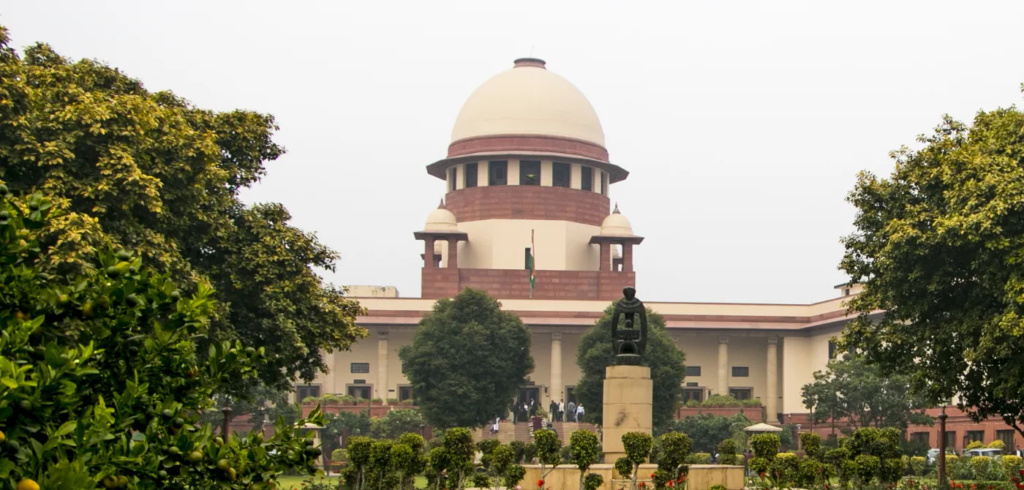UPSC Relevance: GS Paper II: Constitution (Articles 22, 14, 19, 21), Fundamental Rights, Judicial Review.GS Paper IV: Ethics in governance, executive overreach, and rule of law.
Why in News
Preventive detention, a constitutional tool allowing the state to detain individuals before they commit a crime, has recently come under scrutiny. In Dhanya M. vs State of Kerala (2025), the Supreme Court struck down a preventive detention order under the Kerala Anti-Social Activities (Prevention) Act, 2007 (KAAPA), emphasising that such powers must be exercised sparingly and in strict accordance with constitutional safeguards. The judgment highlighted the difference between law and order and public order, warning against the misuse of preventive detention as a substitute for criminal prosecution or to circumvent bail orders.

Background
Preventive detention has a long history in India, dating back to the Bengal Regulations of 1818 under British colonial rule, used primarily to suppress dissent and maintain control. The Government of India Act, 1935 further empowered provincial legislatures to enact preventive detention laws in the interest of “public order.” Unlike Britain, which used such laws mainly in wartime, independent India retained and normalised these powers as a permanent governance tool.
During the Constituent Assembly debates, preventive detention was controversial. While some members warned against its overreach, communal unrest and political instability gave it a degree of legitimacy. Article 22 was drafted as a Janus-faced provision — promising due process on one hand but simultaneously excluding preventive detention from certain safeguards. The A.K. Gopalan case (1950) further reinforced this isolation by holding that preventive detention could only be tested under Articles 22(3)–(7), leaving detainees cut off from other fundamental rights.
Challenges and Issues
Despite Supreme Court warnings, preventive detention laws such as KAAPA remain overbroad, encompassing vague terms like “goonda” or “rowdy,” effectively allowing the state to interpret law and order issues as threats to public order.
Key challenges include:
- Executive overreach – Authorities can detain individuals for extended periods without sufficient proof.
- Erosion of fundamental rights – Rights under Articles 14, 19, and 21 are often eclipsed, leaving citizens vulnerable.
- Procedural weaknesses – Advisory boards and judicial review offer limited safeguards.
- Potential misuse – Especially in cases involving dissent, protests, or political opposition.
Judicial Interpretations
- Dhanya M. vs State of Kerala (2025): The Supreme Court clarified that preventive detention must be a measure of last resort and cannot replace regular criminal law.
- S.K. Nazneen vs State of Telangana (2023): Detention is unjustified for mere law and order issues, reinforcing the distinction with public order.
- Rekha vs State of Tamil Nadu (2011) & Banka Sneha Sheela vs State of Telangana (2021): Preventive detention is an exception to Article 21 and should only be employed in rare circumstances.
- A.K. Roy vs Union of India (1982): Courts refused to extend the Maneka Gandhi (1978) principles to preventive detention, leaving it outside the protections of Articles 14, 19, and 21.
These judgments reveal a tension between safeguarding individual liberty and granting the executive extraordinary powers, creating a “constitutional Bermuda Triangle” where rights vanish.
Ethical and Legal Dilemmas
The debate mirrors the science fiction scenario in Steven Spielberg’s Minority Report, where pre-crime policing detains individuals based on predictions. In India, preventive detention similarly relies on the subjective satisfaction of authorities, bypassing due process, presumption of innocence, and proper judicial scrutiny.
The risk is magnified by the uncertainty in predicting human behavior, making preventive detention vulnerable to misuse, political bias, and administrative convenience, rather than being a strictly targeted security measure.
Way Forward
- Restrict preventive detention to exceptional threats – such as terrorism, transnational drug cartels, or organized crime.
- Strengthen procedural safeguards – ensuring robust judicial review, advisory boards, and timely hearing of detainees.
- Align with modern rights jurisprudence – re-examine rulings like A.K. Gopalan and A.K. Roy in light of Maneka Gandhi’s principles.
- Promote evidence-based enforcement – limit reliance on subjective assessments and enhance police investigatory capacity.
- Prevent routine administrative use – ensure preventive detention is not employed to silence dissent or avoid judicial processes.
Conclusion
Preventive detention is a double-edged sword: intended to protect public order, but often threatening individual liberty. While judicial pronouncements like Dhanya M. provide hope, systemic reforms are urgently needed to prevent misuse. Without strict limits, India’s pre-crime framework risks undermining the constitutional values of liberty, equality, and due process — the very principles it is meant to safeguard.
UPSC Prelims- practice questions
Q1. Which of the following statements about Preventive Detention under the Indian Constitution is/are correct?
- Articles 22(3)–(7) allow detention without trial for a maximum period of 12 months.
- Preventive detention laws can be applied only to public order threats, not mere law and order issues.
- Judicial review of preventive detention is completely barred under Article 22.
Options:
A. 1 and 2 only
B. 2 and 3 only
C. 1, 2, and 3
D. 1 only
Answer: A. 1 AND 2 ONLY
Explanation: Article 22(3) allows preventive detention up to 12 months. Preventive detention should be for public order threats, not routine law and order. Judicial review is not completely barred; courts can examine procedural compliance and safeguards.
Q2. Consider the following statements about historical origins of preventive detention in India:
- It originated in India under the Bengal Regulations of 1818.
- The Government of India Act, 1935 empowered provincial legislatures to enact preventive detention laws in the interest of “public order”.
- Britain used preventive detention extensively in peacetime.
Options:
A. 1 and 2 only
B. 2 and 3 only
C. 1, 2, and 3
D. 1 only
Answer: A. 1 AND 2 ONLY
Explanation: Preventive detention started under the Bengal Regulations (1818) and was empowered by the 1935 Act. Britain used it mainly in wartime, not extensively in peacetime.
Q3. Which of the following Supreme Court cases held that preventive detention laws are exceptions to Article 21 and must be used only in rare circumstances?
A. Maneka Gandhi vs Union of India (1978)
B. A.K. Gopalan vs State of Madras (1950)
C. Rekha vs State of Tamil Nadu (2011)
D. A.K. Roy vs Union of India (1982)
Answer: C. REKHA VS STATE OF TAMIL NADU (2011)
Explanation: Rekha and Banka Sneha Sheela reaffirmed that preventive detention is an exceptional power, not a routine tool.
Q4. The term “Golden Triangle” in Indian constitutional law refers to which set of Articles?
A. Articles 14, 19, and 21
B. Articles 22, 19, and 21
C. Articles 14, 22, and 21
D. Articles 12, 19, and 21
Answer: A. ARTICLES 14, 19, AND 21
Explanation: These Articles ensure equality, freedom, and life/liberty — the core protections of fundamental rights.
Q5. Which of the following statements about the A.K. Roy vs Union of India (1982) case is correct?
A. The Court applied Maneka Gandhi (1978) principles to preventive detention.
B. The Court held that preventive detention laws could not be challenged under Articles 14, 19, or 21.
C. The Court introduced the doctrine of proportionality for preventive detention.
D. The case abolished preventive detention under the Constitution.
Answer: B. THE COURT HELD THAT PREVENTIVE DETENTION LAWS COULD NOT BE CHALLENGED UNDER ARTICLES 14, 19, OR 21
Explanation: A.K. Roy reverted to pre-Maneka reasoning, limiting judicial review of preventive detention.
UPSC Mains practice question
Q. “Preventive detention is an exception to fundamental rights and a necessary tool to maintain public order. However, its misuse poses a threat to liberty and democracy in India.” Critically examine. (150 words)
